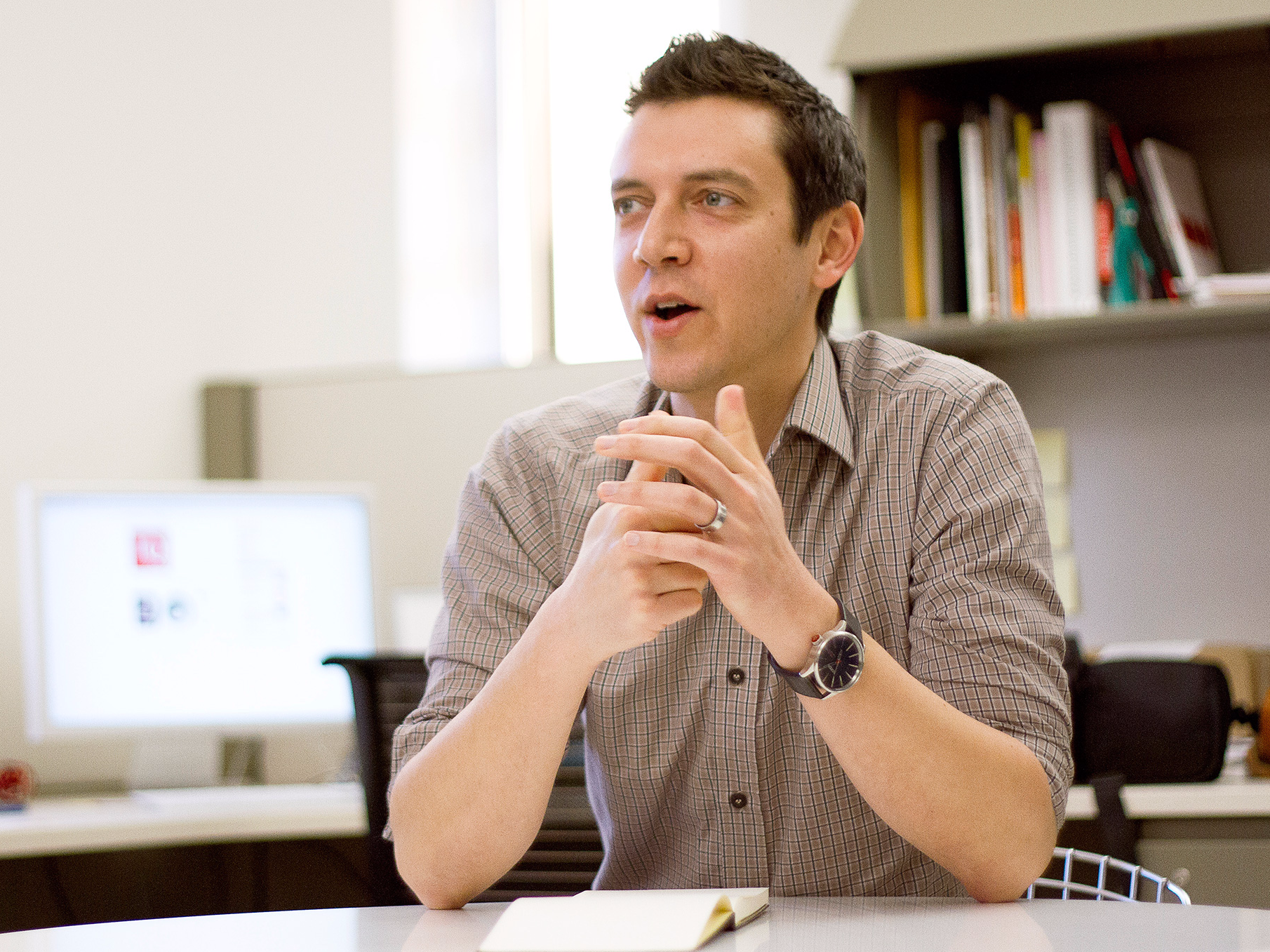- Brand names for companies and products are sometimes developed by professional ‘namers.’
- Rob Meyerson, a brand consultant, spoke with ten professional namers about how they come up with brand names.
- Naming brands is a creative process – and sometimes it’s helpful to maintain an ‘open source’ mindset to share ideas and the latest tools and trends.
- Mutiple namers also said one of the best ways to keep the creative juices flowing is to stop working for a period of time, or change modalities.
- Technology and unexpected angles can also help generate creative product and brand names.
A few months ago, I met up with a woman who wanted to become a professional namer – a consultant who specializes in developing brand names for companies and products.
With over a decade in the world of naming, I’d had this conversation before. I’m usually asked some combination of, “That’s a job?” and “I think I’d be good at that – how canIbecome a professional namer?”
But this time I got a question I hadn’t heard before. She asked me, “How do you come up with name ideas?”
Simple as it seems, I realized I’d not only never answered this question but had never asked anyone else in the professional naming community whether they do it the same way I do.
So over the following months, I conducted 10 in-depth interviews with some of the world's top brand-naming experts. Each one answered similar, specific questions: "What's your process?" "What resources do you use?" "What do you do when you get stuck?"
Below are five things anyone can learn about how to become a good namer:
1. Maintain an 'open-source' mindset
At first, I was hesitant to reach out to fellow namers and ask how they approach the job. What if they thought I was fishing for trade secrets?
I quickly learned, however, that leading namers are more than willing to share their tactics.Maybe some businesspeople are happy to share because they're already successful and feel they have nothing to lose, but I believe these namers are at the top of their game, in part,becauseof their openness. Creative professionals who actively participate in an "open-source" community not only share their ideas but are also more likely to be aware of the latest tools and trends.

Anthony Shore of Operative Words, who the BBC called "one of the world's most sought-after people when it comes to naming new businesses and products," said, "I give away what I know, because I want other namers - even my direct competitors - to come up with great names so that they can also populate the world with words that are interesting and creative."
2. Think of technology as an opportunity, not a threat
Computers are getting faster, smarter, and more efficient. Every month, I see more and more promotions for computer-aided creative services like logo design and naming.
While many creative professionals are understandably annoyed by tools like these (and the unreasonable price expectations they often create), we'd all be wise to think of them not as competitive threats, but as tools to augment our creative processes.
Shore is already using AI to expand his naming process and believes that, in the future, "accessible AI tools for name generation will increase everyone's access to interesting names."
And Amanda Peterson, formerly head of naming at Google, added machine learning to her own name generation process to send it into an insane drive.

Sometimesquantitycan help give rise to quality - as long as you have an eye for what works, which is where humans still have an advantage. Jonathan Bell, managing director of WANT, explains that he's not too worried, and doesn't see the technology as a threat.
"I always say that our job isn't to create a name, it's to help you pick one," he said.
3. To get the work done, stop working
Multiple namers said the best way to keep the creative juices flowing on a project is to stop working on it for some time.
Scott Milano, managing director of brand naming agency, Tanj, suggests people frustrated by their projects should step away from the project for a brief period of time. "Even if it's a couple hours, or a day or so, just do not think about it, and try to come back to it with fresh eyes."
And Clive Chafer, a 30-year naming veteran, has a suggestion for what to do during that time away from the work. "Exercise is terrific at reframing the brain - at throwing the pieces up and letting them fall down in different places," he said.
4. Mix up your modality
Like any other creative process, name generation can start to feel almost automated when done over and over again. While following the same steps every time can increase speed and efficiency, this complacency can lead to a lack of originality. The naming experts I spoke to endorsed the idea of changing up their routines to help spur lateral thinking and new ideas.
Shannon DeJong, CEO of House of Who, said that if she's been sitting in front of a computer all day, opening an Excel spreadsheet will kill her creative mojo. Instead, she grabs pen and paper and goes for a walk.
In addition to switching from digital to analog, another "modality shift" includes moving from words to imagery. Milano said, "I like how it just kind of lets me forget the words themselves, and just kind of float, conceptually, and find new territories."
Yet another option is to switch from individual work to group work. Bell said developing name ideas can be an individual brainstorming process, or it can be done on a whiteboard with a group.
5. Attack the problem from an unexpected angle
Approaching a project from unexpected angles often helps namers broaden their thinking.
For example, when naming a new brand of long-lasting batteries, namers might instead imagine they're naming a long-lasting energy drink. "By thinking through an attribute as it appears somewhere else, you are able to find ideas that are differentiated but relevant, because when you take a word from a different category and drop it into a relevant category, it immediately becomes relevant to that new category," Shore said.
Other examples include changing the physical environment, or shocking the system by purposely coming up with bad ideas. When DeJong needs to dig deeper on projects that require "more tranquil, open, expansive ideas," she may drive an hour away to a different location to give herself more space and beauty.

And Eli Altman, creative director of A Hundred Monkeys, advocates coming up with bad ideas first because "people are actually a lot better at coming up with bad names than they are at coming up with good names." Once you come up with some bad names, identify what makes them bad, and then flip the equation.
Naming is a niche within a niche - only a handful of brand consultants fully dedicate themselves to the art. By sharing the key elements to naming, I hope to inspire and provide insight on how to hone creative techniques - and how successful namers come up with brand names.
Rob Meyerson is a brand consultant and professional namer. He runs the siteHow Brands Are Builtand hosts a podcast of the same name. He is also principal and founder of Heirloom, an independent brand strategy and identity firm in the San Francisco Bay Area.

